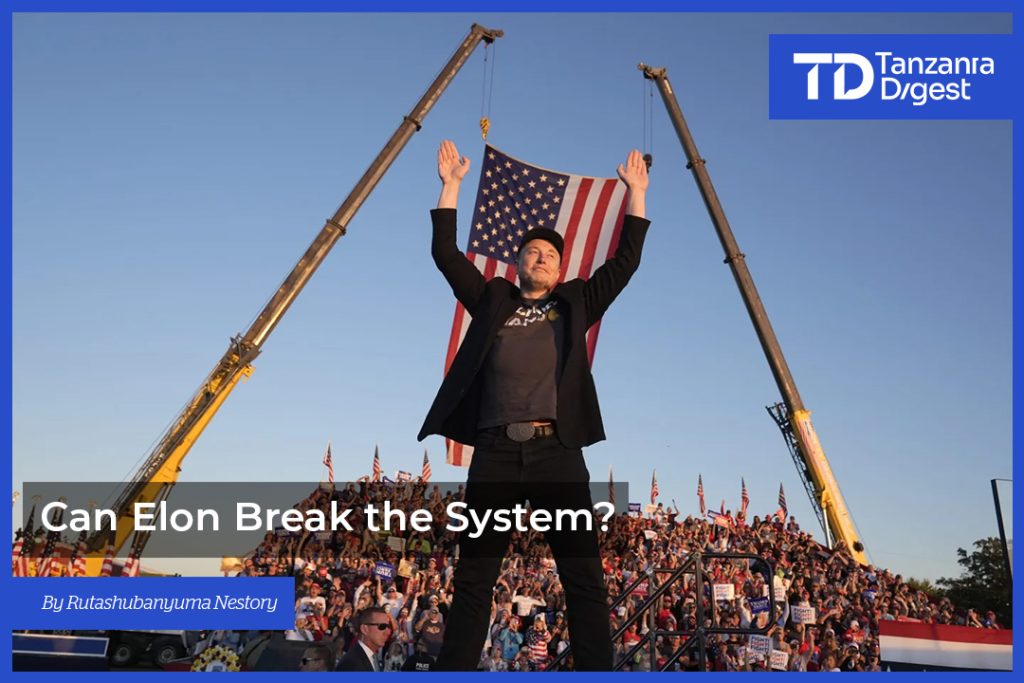Elon Musk announced the formation of the “America Party” on July 5, 2025. Here are the key details:
1. Announcement and Rationale.
Musk declared the party’s formation on his social media platform X, stating it aims to challenge the U.S. “uniparty” system dominated by Democrats and Republicans. He criticized both parties for enabling excessive spending and “bankrupting our country with waste & graft“.
The announcement followed an X poll where 65.4% of 1.2 million respondents supported a new party breaking the two-party system.
2. Catalyst: Feud with Trump.
The move stems from Musk’s bitter fallout with former ally Donald Trump. Musk, who was Trump’s largest 2024 campaign donor ($250 million) and head of the “Department of Government Efficiency” (DOGE), resigned in May 2025 over policy disputes.
Primary disagreement centered on Trump’s “One Big Beautiful Bill,” a spending package estimated to add $3.4 trillion to the U.S. deficit over a decade. Musk labeled it “debt slavery” and “political suicide” for Republicans.
Trump retaliated by threatening to revoke federal subsidies for Musk’s companies (e.g., Tesla, SpaceX) and even hinted at deporting Musk (a naturalized U.S. citizen since 2002).
3. Political Strategy.
Laser-Focus Approach:
The party plans to target 2–3 Senate seats and 8–10 House districts in the 2026 midterms to become a “deciding vote” on contentious legislation.
Policy Platform:
Framed as fiscally conservative, prioritizing debt reduction and anti-corruption measures. Social policies remain undefined, though Musk aligns with conservative views on many issues.
Leadership:
Musk cannot run for president (as a South Africa-born citizen), but will fund and shape the party. No leaders or candidates have been named yet.
4. Current Status and Challenges.
– Registration:
As of August 5, the party is not formally registered with the Federal Election Commission (FEC).
Historical Precedent:
Analysts compare it to Ross Perot’s 1992 independent run, which split votes but failed to win electoral votes. Third parties face systemic barriers in the U.S.
Republican Concerns:
GOP fears vote-splitting could jeopardize their 2026 midterm prospects.
Key Context: America Party’s Viability.
| No. | Factor. | Details. |
| 1.0 | Electoral Strategy | Target swing districts; exploit “razor-thin” legislative margins. |
| 2.0 | Funding. | Musk’s personal wealth ($200B+) enables unprecedented resources. |
| 3.0 | Public Sentiment. | 40%+ Trump approval, but bipartisan frustration with spending. |
| 4.0 | Major Obstacles. | FEC registration; voter reluctance to support third parties. |
Conclusion.
The America Party emerges from a personal-political rupture between Musk and Trump, leveraging populist frustration with U.S. fiscal policies. While Musk’s resources and targeted strategy could disrupt specific 2026 races, the party’s long-term impact hinges on formal registration, candidate recruitment, and overcoming historical third-party marginalization. For ongoing updates, monitor FEC filings and Musk’s X announcements.
ELON MAY DISRUPT AMERICAN POLITICAL SYSTEM BUT WILL NOT DOMINATE IT.
Elon Musk’s newly announced “America Party” faces monumental challenges in breaking the two-party dominance, with structural, legal, and political barriers likely limiting its impact to a disruptive force rather than a true replacement. Here’s a breakdown of key factors:
1. Structural and Legal Hurdles.
Campaign Finance Laws:
Federal contribution limits (∼$450k) prevent Musk from self-funding the party. He needs thousands of donors to meet funding needs, unlike his businesses.
Ballot Access:
State-specific rules require massive signature collection (e.g., 130k+ in California). This process could take years, hindering 2026 election readiness.
FEC Registration:
As of August 5, “no records” exist for the “America Party” with the FEC, indicating it’s not yet a legally recognized entity.
2. Political Realities.
Voter Loyalty:
Despite bipartisan frustration, 90% of Republicans approve of Trump, and partisans rarely defect to third parties. Polls show only “40%” of Americans are open to supporting Musk’s party, mostly male independents and Republicans.
Spoiler Effect:
Historically, third parties split votes (e.g., Ross Perot’s 1992 run aided Clinton’s win). Republicans fear Musk could sabotage their 2026 midterm chances by targeting swing districts.
Candidate Recruitment:
Experts note Democrats “hate Musk,” and Republicans are “attached to Trump,” making candidate recruitment difficult.
3. Musk’s Advantages.
Unprecedented Resources:
Musk’s $200B+ wealth allows massive Super PAC spending. He donated “$291M” to Republicans in 2024, proving his funding capacity.
Targeted Strategy:
Focusing on “2-3 Senate seats and 8-10 House districts” could exploit “razor-thin” legislative margins, positioning the party as a swing vote.
Populist Messaging:
Framing Democrats and Republicans as a “uniparty” that enables deficit spending ($3.4T added by Trump’s bill) resonates with fiscal conservatives.
4. Historical Precedent.
Third-Party Failures:
No third party has gained sustained power since 1856. Theodore Roosevelt’s 1912 Progressive Party won 27% of the popular vote but collapsed afterward. Perot’s 19% in 1992 yielded zero electoral votes.
Musk’s Political Missteps:
His $25M intervention in Wisconsin’s 2025 Supreme Court race failed to elect his preferred candidate, revealing money’s limits.
Viability Assessment: Key Factors.
| No. | Factor. | Advantage for Musk. | Obstacle. |
| 1.0 | Funding. | $200B+ personal wealth. | Federal donation caps. |
| 2.0 | Public Support. | | 65% in X polls (1.2M votes). | Non-representative sample. |
| 3.0 | Ballot Access. | Targeted state strategy. | Complex state laws. |
| 4.0 | Elite Backing. | Libertarian/Andrew Yang outreach. | GOP/Dem resistance. |
| 5.0 | Trump’s Popularity. | Split GOP votes possible. | 90% GOP approval of Trump. |
Conclusion: Disruption, Not Dominance.
Musk’s party may “influence 2026 midterms”; by threatening GOP incumbents in primaries and acting as a spoiler in tight races. However, “no evidence suggests it can replace either major party”. Success would require overcoming 160 years of institutional inertia, voter habits, and legal frameworks designed for duopoly power.
As experts note, the likeliest outcome is a “balancer” role in specific districts, not systemic breakdown. For sustained impact, Musk must navigate FEC registration, ballot access wars, and Trump’s retaliation (e.g., subsidy cuts to Tesla).
Read more analysis by Rutashubanyuma Nestory

